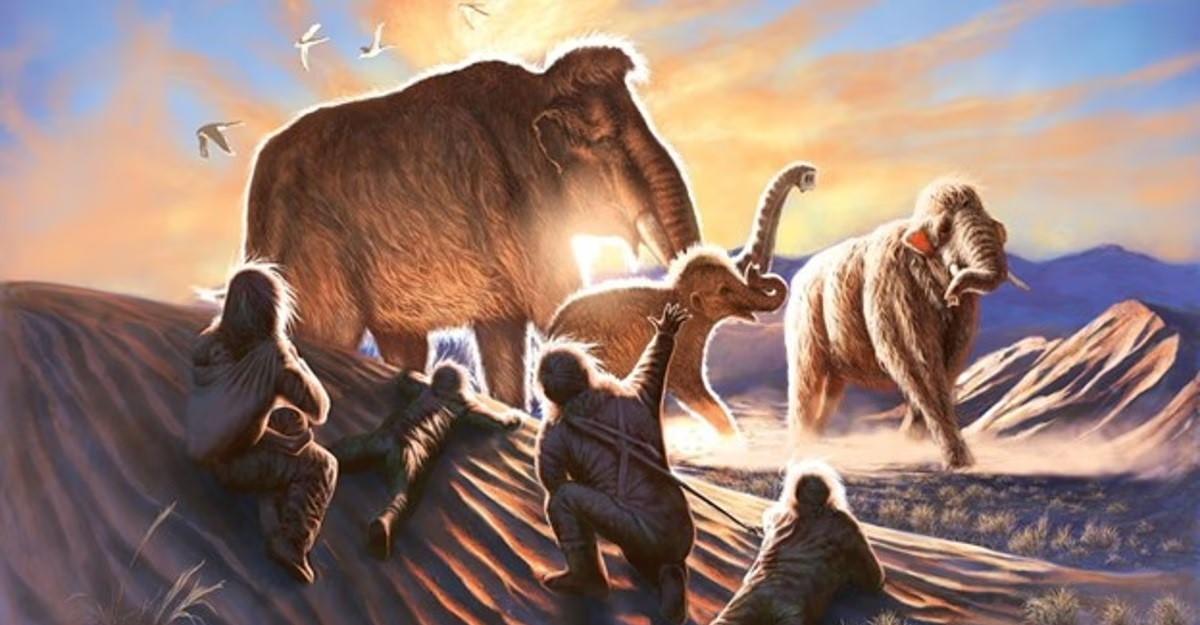Imagine journeying back in time to the era of woolly mammoths, some 14,000 years ago. That’s what a team of international researchers from the University of Ottawa, the University of Alaska Fairbanks, McMaster University and Adelphi University, and Indigenous scholars, managed to do. Using novel high-resolution isotope profiling (a sort of “paleo-GPS”), they were able to connect the dots between the wanderings of a woolly mammoth and the earliest known human settlements in the remote expanses of eastern Beringia (the land and maritime area between the Lena River in Russia and Canada’s Mackenzie River).
The paper, published in Science Advances, sheds light on the relationship between mammoths and early hunter-gatherer communities in the region. Through a detailed analysis of the mammoth’s remains and genetic connections, the researchers were able to reconstruct the life history and movements of this iconic species, providing evidence of overlapping mammoth/human habitats and of the possible role mammoths played in facilitating the peopling of the Americas.
This study focuses on a female woolly mammoth, “Élmayuujey’eh” (Elma), named by the Healy Lake (Alaska) Village Council, whose remains were discovered at Swan Point, the earliest archeological site in Alaska. Alongside the mammoth, the site also contained remains of a juvenile and a baby mammoth, indicating the presence of a herd in the area. This finding intrigued researchers and prompted further investigations into the movements and interactions between mammoths and early humans.
Clément Bataille (associate professor, Department of Earth and Environmental Sciences, Faculty of Science, University of Ottawa), lead author and PhD student Audrey Rowe (University of Alaska Fairbanks) and co-author Matthew Wooller (University of Alaska Fairbanks) conducted a detailed isotopic analysis of Élmayuujey’eh’s complete tusk. This allowed them to retrace the mammoth’s movements through her lifetime.
“Elma roamed extensively within the densest region of archaeological sites in Alaska,” says Rowe. “This suggests a close association between mammoths and early human hunting camps.”
Meanwhile, Hendrik Poinar and his team at McMaster University conducted genetic analyses of the remains of eight other individual mammoths found in the region. They determined that the Swan Point area likely served as a meeting ground for at least two closely related herds. This suggests that mammoths had social structures and exhibited herd behavior.

“The new tools developed in this research will help with efforts to conserve biodiversity, providing an analogue to modern times”
Professor Clément Bataille
— Associate professor, Department of Earth and Environmental Sciences, Faculty of Science
Solving the mystery of human-mammoth coexistence
“This research gives new insights into how humans and mammoths interacted when humans first came to the Americas,” says Bataille. “It seems that mammoths, which were plentiful in eastern Beringia and an important food source, attracted humans to the area.”
It’s not the first time that this geolocation technique has been used to retrace the mobility of a mammoth. The team created it for a study of a 17,000 year old male named Kik, who lived in a colder period when humans hadn’t yet arrived, unlike Elma.
Interestingly, Kik and Elma showed very different mobility behaviours. Kik moved freely over long distances across large valleys and tundra plains using regular core areas, whereas Elma, while still using similar core areas, moved shorter distances, maintaining a high elevation. This raises questions about the role of humans and climate change in influencing the mobility of this ancient species.
This high-resolution isotope profiling technique can be applied to uncover the ecology of many other extinct species. Used with genetic analysis, it’s an innovative way to learn about how ancient species responded to climate change and human pressures, and what ultimately caused their extinction.
By shedding light on mammoth ecology and lifeways and mammoths’ long-term interactions with climate change and humans, the study can help us predict how animals will respond to climate and human pressures in the future. “The new tools developed in this research, along with the insights into the ecology of extinct species, will help with efforts to conserve biodiversity, providing an analogue to modern times, where many large mammals are in danger of going extinct with human and climate perturbations,” says Bataille.
This study was funded in part by the NSERC Discovery Grants program and was published in Science Advances on January 17.
